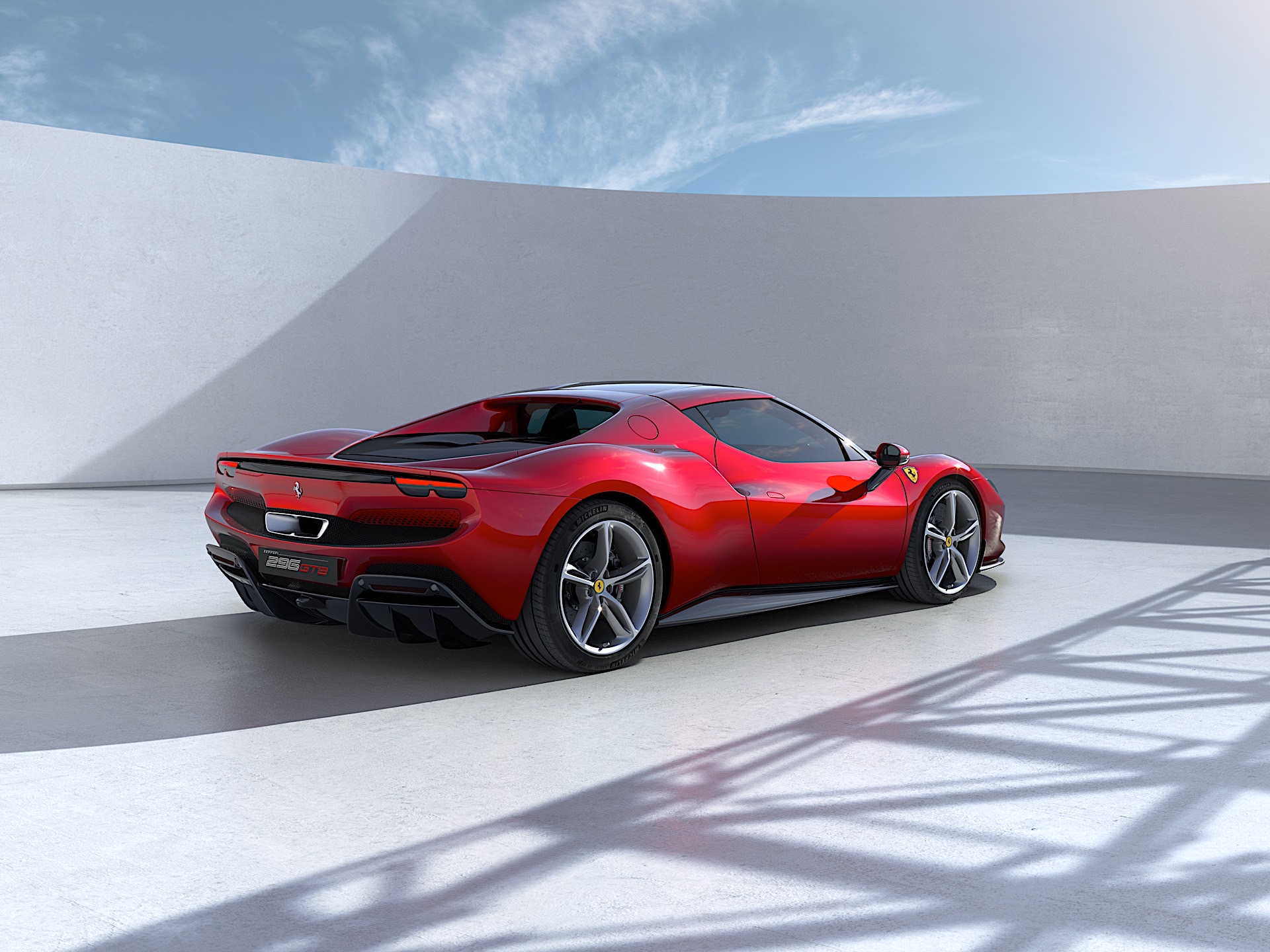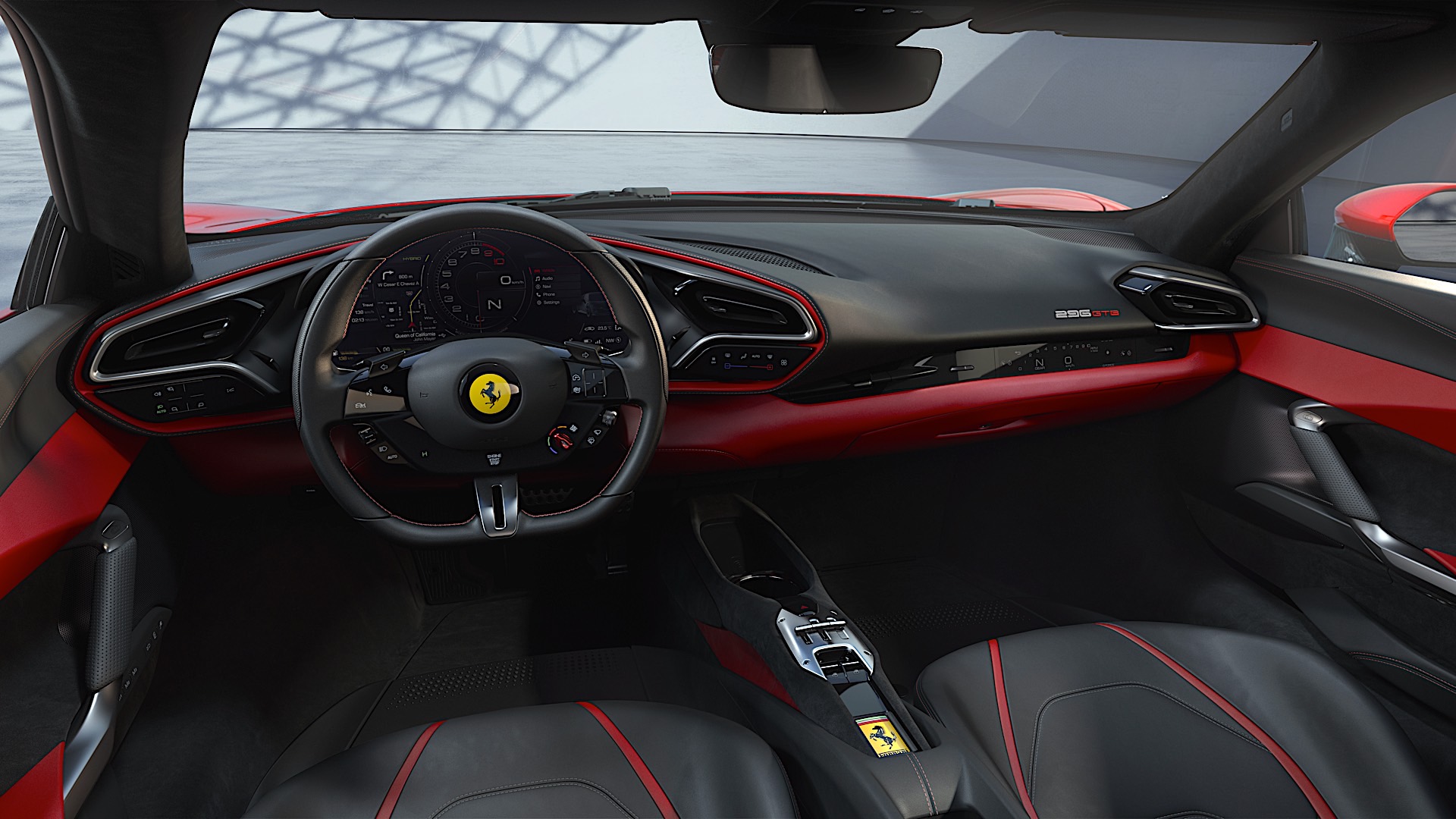The Ferrari 296 GTB marks the first time a V6 engine has graced the engine bays of a modern vehicle donning the prancing horse badge. Ferrari last used a V6 in the 1957 Dino 156 F2 and several Dino models from the 1960s and 1970s. This time, however, electrification is now part of the equation to bring the 296 GTB’s performance up to par with the world’s best supercars.
Powering the mid-engine Ferrari 296 GTB is a 3.0-liter turbocharged V6 coupled to an electric motor, an eight-speed dual-clutch automatic, and a 7.45 kWh battery. The total system output is a whopping 830 hp turning only the rear wheels. This allows the 296 GT to sprint to 100 km/h (62 mph) in 2.9 seconds, and finish one lap on the Fiorano test track in 1:21. In EV mode, Ferrari says that the 296 GTB can travel up to 25 km or 15 miles before the gas engine activates. An electronically-controlled differential is also part of the equation so that the car can put its power down as efficiently as possible. A transition manager actuator allows the hybrid system to decouple quickly and run the car solely on the electric motor. When more power is needed, it will seamlessly bring the V6 engine back into the picture. The two turbochargers are placed in the valley of the 120-degree V6 engine, turning it into a hot-vee setup. That means all of the critical components for heat generation are on the upper part of the engine bay.

Extensive active aero is used on the 296 GTB for extra downforce. This includes an active spoiler in the rear bumper. As with most Ferrari models, the functional aspects are cleanly molded together with the rest of the car’s design, resulting in a mid-engine coupe that’s elegant yet purposeful. Two radiators in front of the car cool the engine and gearbox while two condensers keep the battery from overheating. Hot air is pushed out via the underbody so it doesn’t mix with cool air moving to/from the intercoolers. As a result, you get a vehicle that’s been further streamlined, adding to its clean styling.
Extensive chassis work was done to make sure the Ferrari 296 GTB is as fun to drive as it is great to look at. The wheelbase, for example, is 50-mm shorter than previous mid-engine Ferrari models, giving it better agility. Magnetic dampers are also used to sharpen the car’s dynamic capabilities along with extensive weight reduction. Ferrari’s new V6 engine alone is 30 kg or 66 pounds lighter than the V8s used in its other mid-engine vehicles. As a result, the 296 GTB weighs 1,470 kg or 3,241 pounds and has an overall power-to-weight ratio of 3.9 pounds per horsepower. Four drive modes will be available: eDrive, Hybrid, Performance, and Qualify, the latter of which provides maximum performance but at the cost of lower battery recharging.
The 296 GTB’s interior follows the same design concept as the one found in the SF90. That means a fully digital gauge cluster and a head-up display show all valuable information. Unlike most vehicles, the 296 GTB does away with the main center display, focusing everything in front of the driver via the digital gauge cluster. Passengers, however, get their own display. Ferrari has also swapped the majority of the physical buttons to haptic feedback ones, including the engine start/stop on the steering wheel. The result is a cabin that’s minimalistic yet modern, continuing the clean and elegant theme started on the car’s exterior.

For ultimate performance, Ferrari offers the 296 GTB with the Assetto Firoano package. This reduces the vehicle’s weight significantly by adding track-tuned Multimatic shocks, carbon fiber aero bits that add an extra 10 kg or 22 pounds of downforce, and a Lexan rear window made of polycarbonate resin thermoplastic. You also get a redesigned door panel structure that cuts weight by 12 kg or 26.4 pounds. Lastly, the Assetto Fiorano package is also available with a special livery inspired by the 250 Le Mans and Michelin Pilot Sport Cup 2R high-performance tires for track use. The Ferrari 296 GTB will also get the brand’s seven-year warranty, which covers all scheduled maintenance.

